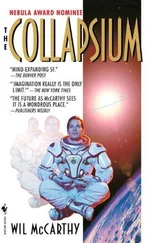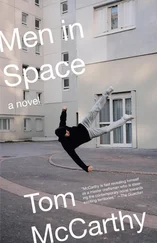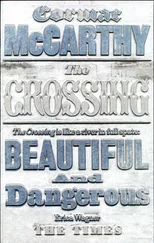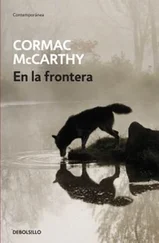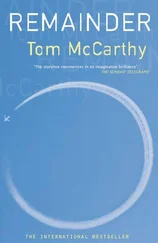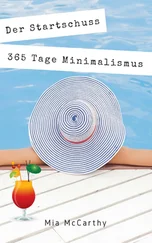“Now, this part’s changed since yesterday,” Pietersen says, replacing one tile of the mosaic with a new one that contains a dark, concentric set of ripples moving outwards from a spot covered by trees. “But I’m not sure we’ve knocked the big gun out. When you fly over it tomorrow, try to ascertain whether the scorch marks fall along the main diameter of all these circles, or if they’re off-centre.”
“I’ll snap the area, but I don’t know if I’ll be able to tell that with my naked eye, through all the smoke,” Serge replies.
“Try rubbing cocaine in it,” Pietersen tells him.
“Cocaine?” Serge asks. “Isn’t that for teeth?”
“Yes, but it works wonders on your vision: sharpens it no end. Go pick some up from the Field Hospital in Mirabel.”
Serge does so. He’s given a small make-up tin of white powder, a little of which he daubs onto his retina just prior to take-off the next day. It takes effect as they’re clearing their own kite balloon, which starts beaming up at him taut and alert, a big white eyeball. The lines of tracer-fire stand out more starkly a few seconds later, their velocity and inclination bold, insistent. The mesh of trenches, the coloured flames of guns and flares, distant roads and railway lines, the markings on the ground: all these things come at him more cleanly, more pronounced-but then so do Archie puffs, vapour trails and cordite smoke-clouds, not to mention the real clouds above him and the sky’s deep blue.
“Did it work?” Pietersen asks him next time he visits the slaughterhouse.
“I’m not sure,” he answers.
“You can get a stronger effect by snorting it,” Pietersen tells him.
“What, like snuff?”
“Knock a little out across a table top or mirror,” Pietersen says. “Lay it in a line, and snort it through a rolled-up banknote. I’m afraid the scorch-marks are off-centre.”
“Sorry?”
Pietersen’s finger taps the mosaic on the board. This shows the same territory as it did yesterday, but most of the landmarks on this have mutated: changed their shape, grown blast-wrinkles, become scarred by craters or even, in some cases, simply disappeared. Sliding his mind’s gaze between the old images and these updated ones, Serge has a flickering apprehension that the landscape’s somehow moving, as though animated.
“Like a cat’s leg,” he says.
“What is? Which bit?”
“The whole thing.”
Pietersen steps back and tilts his head at the elongated spit of land formed by the collated images. After a while he nods and murmurs:
“I suppose it does have that shape, a little.”
The next day, Serge taps a small mound of cocaine onto his shaving mirror, pushes it into a line, rolls up a twenty-franc note and breathes the powder up towards his cranium. It stings behind his eyes, then numbs the upper part of his face. As Gibbs takes off, Serge feels a lump of phlegm grow in his throat. He swallows; it tastes bitter, chemical. The tracer-lines this time are vibrant and electric: it’s as though the air were laced with wires. Higher up, the vapour trails of SE5s form straight white lines against the blue, as though the sky’s surface were a mirror too. Scorch-marks and crater contours on the ground look powdery; it seems that if he swooped above them low enough, then he could breathe them up as well, snort the whole landscape into his head. The three hours pass in minutes. As they dip low to strafe the trenches on the way back, he feels the blood rush to his groin. He whips his belt off, leaps bolt upright and has barely got his trousers down before the seed shoots from him, arcs over the machine’s tail and falls in a fine thread towards the slit earth down below.
“From all the Cs!” he shouts. “The bird of Heaven!”
From this day onwards, he develops a keen interest in the contents of the medicine box in the RE8’s cabin, tucked between the aerial’s copper reel and the second set of controls. He experiments with benzoic acid, amyl nitrate, ether and bromide before discovering diacetylmorphine. Held in injectable phials, the liquid floods him with euphoria each time he pushes it into his flesh: a murky, earthy warmth that spreads out from his abdomen in waves. Then everything slows down and seems to float: the tracers rise towards him languidly, like bubbles in a glass; Archie puff-clouds hang about his head like party bunting. He likes it when the bullets come close-really close, so that they’re almost grazing the machine’s side: when this happens he feels like he’s a matador being passed by the bull’s horn, the two previously antagonistic objects brought together in an arrangement of force and balance so perfectly proportioned that it’s been removed from time, gathered up by a pantheon of immortals to adorn their walls. The sky takes on a timeless aspect too: the intersecting lines of ordnance residue and exhaust fumes form a grid in which all past manoeuvres have become recorded and in which, by extension, history itself seems to hang suspended. Flashes tincture the lines green, lace them with yellow, spatter them with incandescent reds. The colours look synthetic, as though they’d been daubed and splashed on from bottles, like Carlisle ’s oils, aquarelles and acrylics; it seems to Serge that if he had a jar of turpentine or camphor and a sponge then he could wipe the whole sky clear…
In states such as this, he finds his attention captivated by the German kite balloons. He’ll gaze at them for endless stretches, measuring his position not from the grid squares on his map but from these strange, distended objects as they rotate to his view. Unlike the English ones, they’re coloured the dark, putrid tone of rotting flesh. They may have the shape of intestines, but their rising, falling and eventual deflation makes him think of lungs-diseased ones, like the catarrh-ridden lungs of the burrow dwellers whose flashes they pinpoint. When he sees one being inflated on the ground, it calls to his mind the image of ticks swelling as they gorge themselves on blood. He fires on airborne ones that come into his range not out of hatred or a sense of duty, but to see what happens when the bullets touch their surface, in the way a child might poke an insect. When flame-tendrils push outwards from inside the balloons and climb up their surface before bursting into bloom, he watches the men in their baskets throw their parachutes over the side and jump. Often they get stuck halfway down, tangled in the ropes and netting. Seeing them wriggling as the flame crawls down the twine towards them, he thinks of flies caught in spiders’ webs; when they roast, they look like dead flies, round and blackened.
He starts picturing the batteries he’s targeting as insects too, ticks that have burrowed into the ground’s skin and embedded themselves there: his task’s unpicking them. Pinned to the slaughterhouse’s wall, the photographs take on the air of dermatological slides.
“I don’t think that one’ll be troubling our boys much more,” Pietersen declares triumphantly, tapping a deeply pockmarked patch on his mosaic. “The whole sector’s dead now.”
“Dead?” asks Serge.
“Yes,” Pietersen replies. “You’ve killed it.”
“I don’t see it that way,” Serge murmurs back.
“You think there’s still an emplacement there?”
“That’s not what I mean… It’s just that…”
He can’t explain it. What he means is that he doesn’t think of what he’s doing as a deadening. Quite the opposite: it’s a quickening, a bringing to life. He feels this viscerally, not just intellectually, every time his tapping finger draws shells up into their arcs, or sends instructions buzzing through the woods to kick-start piano wires for whirring cameras, or causes the ground’s scars and wrinkles to shift and contort from one photo to another: it’s an awakening, a setting into motion. In these moments Serge is like the Eiffel Tower, a pylon animating the whole world, calling the zero hour of a new age of metal and explosive, geometry and connectedness-and calling it over and over again, so that its birth can be played out in votive repetition through these elaborate and ecstatic acts of sacrifice…
Читать дальше

